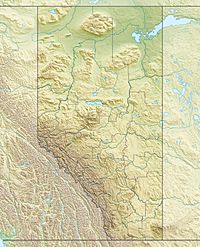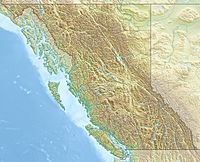Mount Bowlen facts for kids
Quick facts for kids Mount Bowlen |
|
|---|---|

Mount Bowlen
|
|
| Highest point | |
| Elevation | 3,206 m (10,518 ft) |
| Prominence | 170 m (560 ft) |
| Listing | Mountains of Alberta Mountains of British Columbia |
| Geography | |
| Country | Canada |
| Parent range | Bow Range |
| Topo map | NTS 82N/08 |
| Climbing | |
| First ascent | 1901 G.T. Little, Charles S. Thompson, G.M. Weed, Hans Kaufmann |
Mount Bowlen is a cool mountain that sits right on the border between two Canadian provinces: Alberta and British Columbia. It's part of a beautiful area called the Valley of the Ten Peaks.
This mountain got its name in 1953. It was named after a person named John J. Bowlen. He was from Prince Edward Island and became a very successful rancher in Alberta. He was also an honorary chief of the Blackfoot Confederacy, a group of First Nations people. Later, he became a Lieutenant Governor of Alberta, which is like a representative of the King or Queen in the province.
Before it was called Mount Bowlen, the mountain had an older name: "Yamnee". This word means "three" in the local Nakoda (Stoney) language.
What Are Mountains Made Of?
The mountains in Banff National Park, including Mount Bowlen, are made of a type of rock called sedimentary rock. This rock formed over millions of years, from the Precambrian to the Jurassic periods.
Imagine tiny bits of sand, mud, and shells settling at the bottom of ancient, shallow seas. Over a very long time, these layers got squished and hardened into rock.
Later, during a huge mountain-building event called the Laramide orogeny, these layers of rock were pushed up and folded. This is how the tall mountains we see today were created!
Mountain Weather
Mount Bowlen has a subarctic climate. This means it gets very cold and snowy winters. Temperatures can drop below -20 degrees Celsius. With the wind, it can feel even colder, sometimes below -30 degrees Celsius!
Summers on the mountain are usually mild. This kind of weather is typical for high mountains in northern regions.
Images for kids





